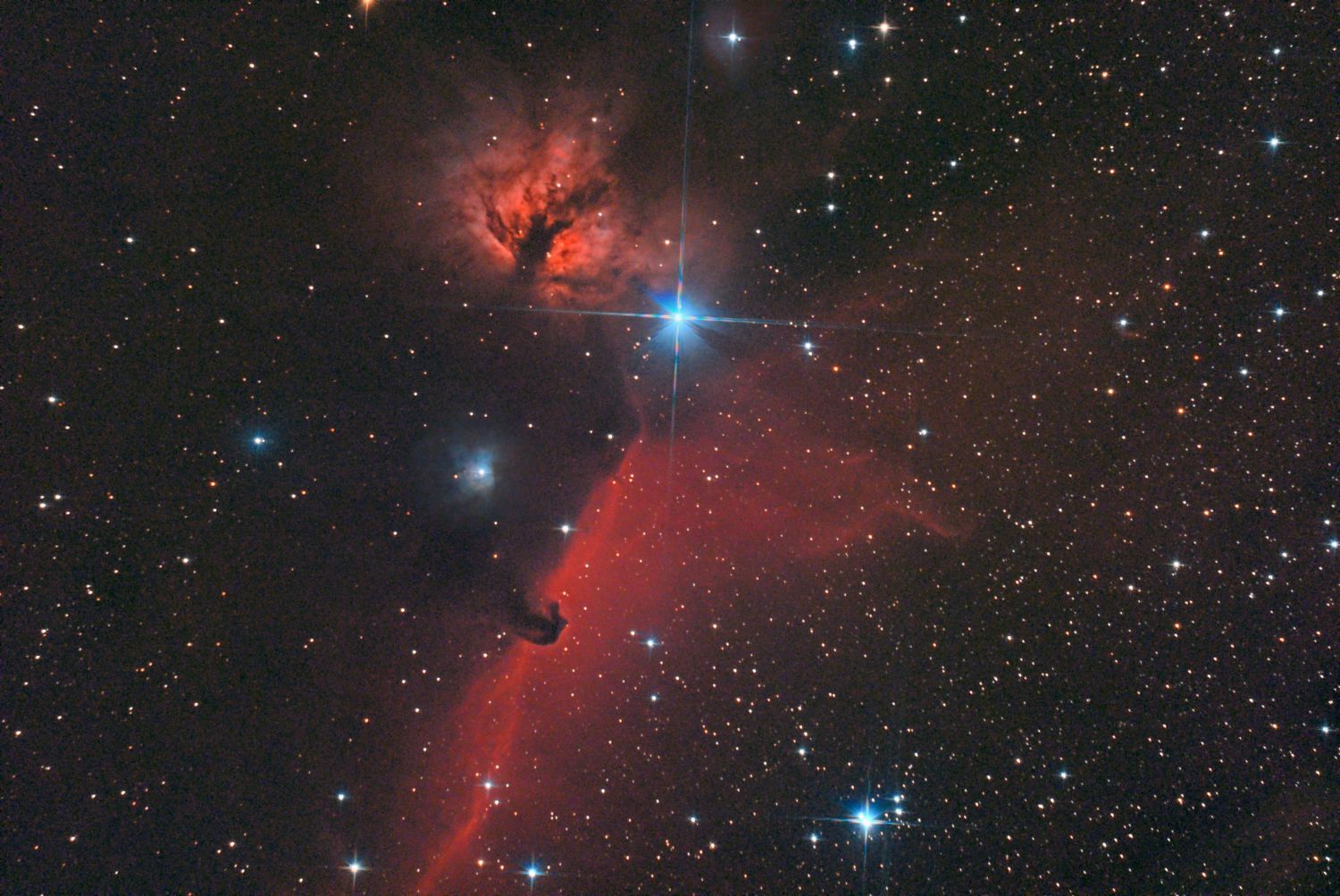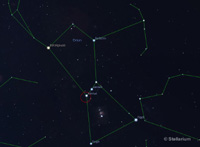Information...
NGC2024 - the Flame Nebula is an emission nebula about 900 - 1,500 light years away. The brightest star in the image, Alnitak (ζ Ori), is the left hand star in the 'belt' of Orion and is actually a multiple star system dominated by a 1.79 magnitude B0 III supergiant. Ultraviolet lght from this star ionises the surrounding clouds of hydrogen gas, which then re-emits visible light when the ejected electrons recombine with the hydrogen atoms. The flame-like structure which is visible in the image is due to dust which obscures part of the nebula's view.
To the right of the NGC2024 is another vast region of hdrogen gas, which is energised by σ Ori, the bright-ish star to the upper right of the image. This region is most well known for the Horsehead Nebula (B33), a visual effect caused by a dense cloud of dust obscuring the light from the emission nebula behind it.
Also in the image are four reflection nebulae, NGC2023 and IC435 which lie below the Horsehead, plus IC431 and IC432 above the Flame Nebula.
For more info. see the Wikipedia entires for the Flame Nebula and Horsehead Nebula.






